Fort Sumter: a very dubious story
So what kind of fort is this? And why did southerners shoot him if he was in the harbor of Charleston, a true southern city, as Margaret Mitchell wrote about him in "Gone With the Wind", and why did the same Americans continue to debate about this event? Although it would seem, why argue: the Southerners were fired upon and captured, while the northerners who defended the fort surrendered. And why this event was the formal reason for the beginning of the US Civil War?
Bombing of Fort Sumter. An engraving of that time.
And it was that the state of South Carolina announced its withdrawal from the state union shortly after Abraham Lincoln won the presidential election in 1860. By February 1861, six more states followed suit. Then, on February 7, the seven separated states announced their decision to unite in a new state - the Confederate States of America. They adopted a temporary constitution, and their capital became the city of Montgomery in Alabama. At the same time in February, an attempt was made to resolve the crisis by peaceful means at a peace conference in Washington. Other slave states on the proposal to join the Confederation so far refused.
Exterior view of Fort Sumter in Charleston Harbor. Engraving 1861
Meanwhile, the troops of the Confederation occupied, with the exception of Fort Sumter, all four forts in the Charleston harbor. Buchanan, who continued to perform his duties as President of the United States, declared an official protest to the Confederates, but did not wish to take military action, leaving the situation to his “successor”. Meanwhile, the governors of the states of New York, Massachusetts and Pennsylvania have already begun to purchase weapon, create and train militias.
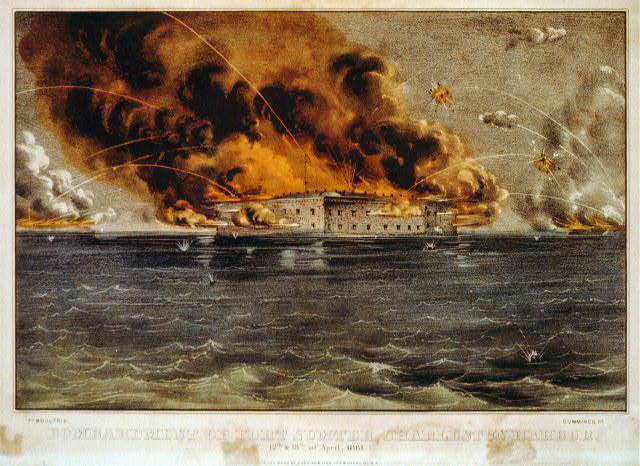
In this engraving the fort blazes with fire.
Oath as President Abraham Lincoln brought 4 March 1861 of the year. In his inaugural speech, he said that the country's Constitution established the eternity of the Union, and if so, secession is illegal. However, he promised not to use force against the southern states, and slavery, where it exists, not to abolish it. However, he warned the separatists that if they tried to encroach on federal property, the force against them would be used.
The fort was fired upon, and the citizens of Charleston peacefully walked along the embankment. War - war, and exercise - by exercise, and it is interesting to see this!
However, when Southerners sent their representatives to Washington to agree on the division of property, Lincoln refused to negotiate with the Confederate ambassadors, since it (the Confederation), they say, is not legitimate, and if so, negotiating with them would mean its recognition and and de jure.
This is how Fort Sumter looks like today.
Now, actually, about fortifications in the Charleston harbor. There were a lot of them and different dignity. First of all, it was Sumter and Moltri. The latter was also the headquarters of the garrison. But from land, Moltri did not have protection, Fort Sumter was rightly considered at that time ... one of the most powerful forts in the world, its construction was literally just finished.
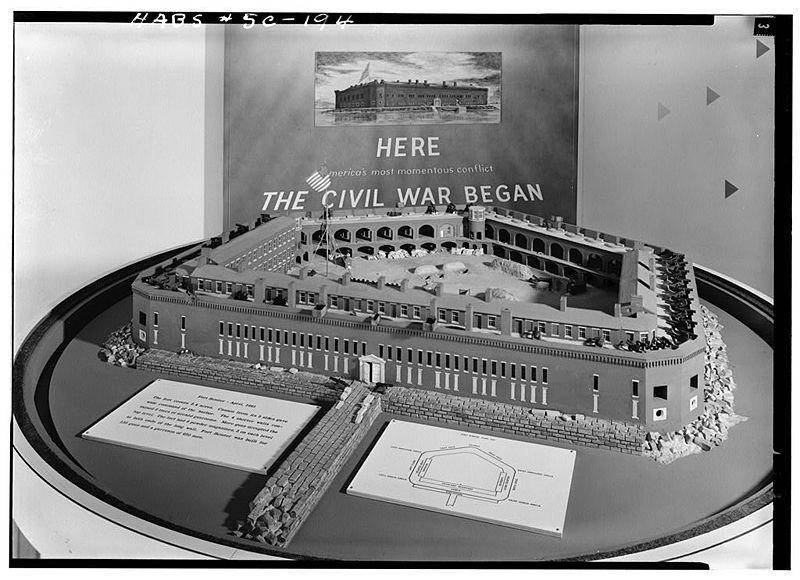
“Civil war has begun here” - the mock of the fort at the time of the bombing.
The commander of the local garrison was Major Robert Anderson, which was, by the way, not by accident, because he was from Kentucky, had a wife from Georgia and even was known as a supporter of slavery. And at the same time, he was familiar with Abraham Lincoln, because in 1832, with the rank of colonel, he commanded the war with the Seminole Indians of the Illinois Volunteer Regiment, while Lincoln himself was the captain of the same volunteers!
Fort Sumter fortification plans.
In general, what to expect, the authorities decided to Carolina, and decided to confiscate federal property in the harbor. Since Anderson had only 85 soldiers, he evacuated Fort Moltry, riveted the guns on it, and sent all the people to Sumter Fort. But at the fort there was no food and fresh water. Therefore, the ship Star of the West was sent to the fort, which was to bring food and water there, as well as 200 people to replenish the garrison. But ... it was here that the Southerners fired the first shots from Fort Cummings Point on it. They did not get in, but the steamer was gone, but Anderson did not support the Star of the West with his artillery fire, because US Secretary of Defense George Floyd recommended him to avoid anything that could provoke unnecessary aggression.
Fort Sumter 14 April 1861.
This was all the more important because the next day, January 10, Florida also withdrew from the Union. A detachment of the federal army went to Fort Pickens, and the northerners received another analogue of Fort Sumter.
Meanwhile, Southerners who proclaimed the Confederation began to argue: is the problem with Fort Sumter an internal affair of the state of South Carolina or should the government in Montgomery decide it? Governor Francis Pickens, once a former ambassador to Russia, said that any federal property in Charleston Harbor should be transferred to the state. But then the question arose: how to select it without using force? Jefferson Davis, who became the president of the Southerners, like Abraham Lincoln, believed that they should act in such a way that the South would not be accused of aggression. And he and the other were confident that the side that strikes first will lose the support of the states that are still neutral. After all, as many as five states voted against secession, and among them was the state of Virginia, and then Lincoln offered to evacuate Fort Sumter, if only to preserve its loyalty.
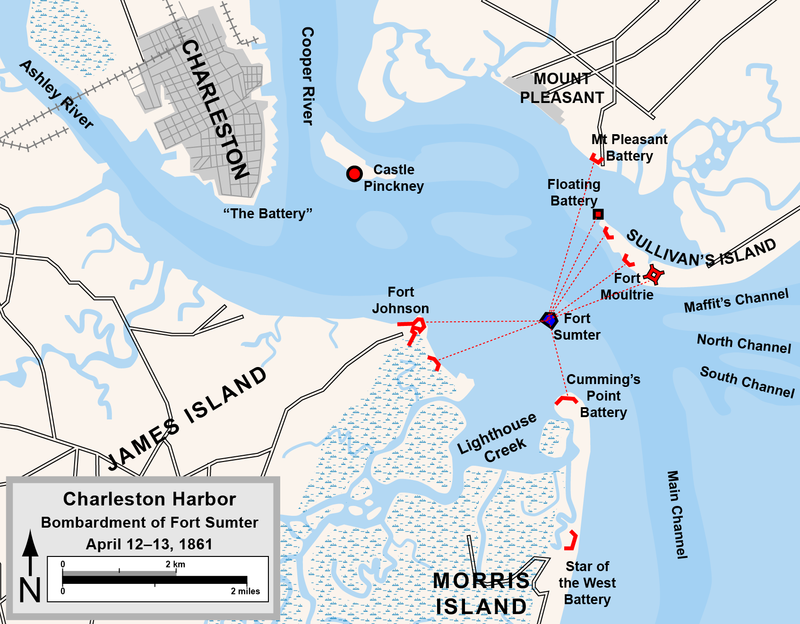
Map of Charleston Harbor.
General Beauregard was appointed to command the forces of the Southerners in Charleston. On March 1, President Davis gave him the rank of full general, made commander-in-chief of the Confederation army in South Carolina, and ordered him to lead the blockade of Fort Sumter. Beauregard stopped all food supplies from Charleston to the fort, because he knew that his own stocks were running out there, and thus he could not last long. Then he began to train his gunners hard. It's funny, but in the past, it was Anderson who was the instructor of Beauregard in artillery at the academy at West Point, and he was Anderson's assistant. And now they had to shoot at each other, consistent with the situation inside the country. Thus, the whole of March, the soldiers of the northerners and southerners, the first on the fort, and the second on the coastal batteries surrounding it, led to an increase in their combat skills.
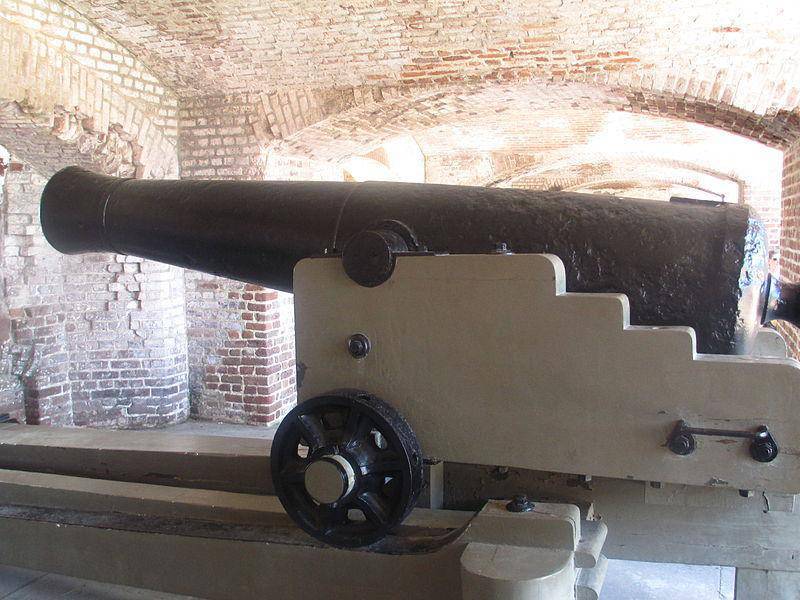
Cannon Fort Sumter.
And then 4 in March to President Lincoln was informed that food supplies in Fort Sumter are significantly less than he thought. Actually, they were not there at all, and the garrison was threatened with hunger. What to do, the president thought ... for almost a month, and only 29 in March decided to send a maritime convoy of merchant ships carrying foodstuffs to the fort under cover of US Navy ships. Gustavus Waz Fox was appointed head of the expedition. 6 April 1861, Lincoln informed Governor Francis Pickens that ships would approach the fort to supply his garrison with food, but weapons and ammunition would not be delivered, and hostilities would not start unless the squadron or fort was attacked. That is, he declared the purely peaceful nature of this action.
Favorite flag of the Confederate - "Bonnie Blue."
At the same time, Lincoln sent a secret expedition to occupy Fort Pickens in Florida. Command ordered the operation, John Warden. And since both expeditions (both to Sumter and Pickens) were being prepared at the same time, they were mistaken in a hurry: the steamer “Powhatan”, which was supposed to sail to Fort Sumter, went to Fort Pickens. However, obviously, both missions were of almost the same character.
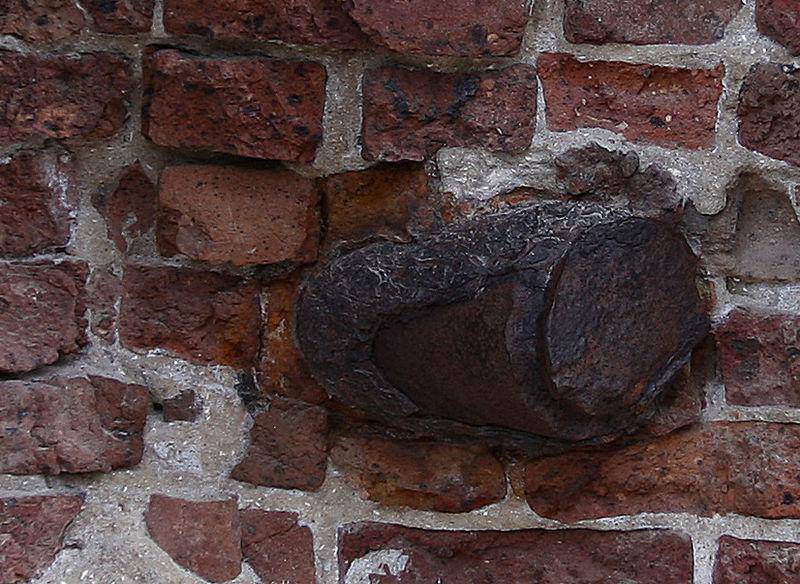
A shell stuck in a fort wall.
The Confederate government did not believe in the peaceful nature of the "expedition." Moreover, when it gathered for a meeting in Montgomery on April 9, it was decided by fire from shore batteries to force him to surrender before the release fleet. Southerners' Secretary of State Robert Thumbes was opposed, he told President Davis that such an attack would “turn away friends in the north from us.”
Casemates with guns. Exposure at Fort Sumter.
Solve the problem entrusted to General Beregar on the spot. Like, if he sees that the fort is receiving reinforcements, it can open fire. The general thought and April 11 sent an ultimatum to Fort Sumter. He either had information or guessed about the coming of Fox Squadron soon and decided to finish the “case” before her arrival.
So today looks like a fort from the inside.
Anderson seems to have responded as follows: "We still have a few days starving here." In addition, he knew that the ammunition at the fort was very small - on the strength of one day. But he was also waiting for Fox squadron. But the squadron was not all.
Brick walls.
Finally 12 on April 1861 of the year at 03: Major Anderson received a message that the fire on the fort entrusted to him would be opened in exactly one hour. And so it happened: in 20: Fort 04 from Fort Johnson exploded in the air directly above Fort Sumter. 30 guns were immediately fired at the fort from Johnson, Moltrie forts, as well as from floating batteries at Charleston Harbor and Cummings Point. Such a well-known supporter of the northern states as Edmund Ruffin personally arrived in Charleston and made the first combat shot at the fort. But Sumter was silent and did not respond to the fire for as long as 43 hours.
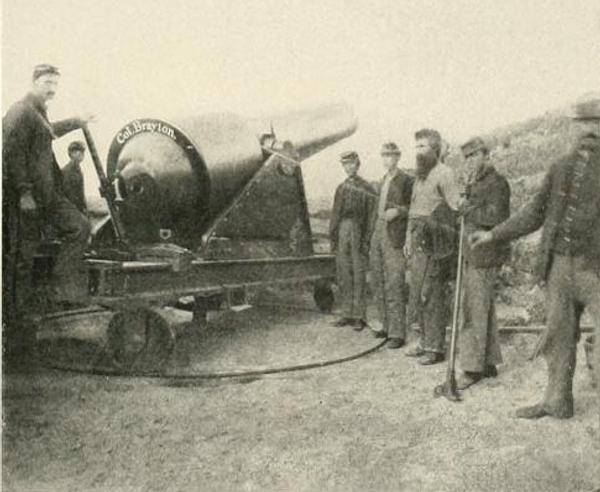
It is from these guns that the Southerners fired at Sumter Fort.
Meanwhile, a fleet of Fox approached Charleston in 03: 00, but the ships did not have time to enter the harbor, and the flagship did not appear at all. And since by the evening the storm had begun, the ships remained on the outer roadstead as well.
In 07: 00 captain Ebner Doubleday made the first shot at Cummings Point from the fort. There were 60 guns on the fort, and, in theory, he could offer strong resistance to 43 rebel guns. However, it was only protected from horizontal shelling, but not from hanging fire. And the Confederates just shot at him from mortars. The cannonade lasted 34 hours: first until the evening, then all night and continued in the morning. Well, the Fox squadron continued to stand at sea, waited for its flagship, and the storm did not stop, preventing the northerners' ships from entering the harbor.
Judging by this engraving, many mortars shot at the fort.
But on the evening of April 12, the troops of the northerners, commanded by John Warden, occupied Fort Pickens. Finally, the central flagpole on the fort collapsed. They did not have time to replace him, since parliamentarians had already arrived at the fort asking whether the lowered flag or the absence of it meant that the fort agreed to surrender. Anderson thought in 14: 00 13 on April 1861 of the year agreed to a truce.
But this was happening inside the fort, and it is simply amazing that no one died there.
The terms of the surrender were agreed on by the evening of the same day, and the next day 14 on April 1861 of the year in 14: the garrison of the fort laid down their arms. Surprisingly, as a result of this bombardment, no one on the fort died, and five northerners and four southerners were injured. As a condition of surrender, Anderson demanded a salute in 30 of gunfire volleys in honor of the US flag and ... got it! But during the salute, a stack of charges unexpectedly exploded, one soldier killed (his name was Daniel Howe, and he became the first victim of the US civil war), and a group of gunners seriously injured, and among them one person was fatally - Edward Galway - who became the second victim of this war . Therefore, the fireworks were stopped exactly in the middle, and all the wounded were taken to Charleston Hospital. As for the garrison, no one thought to take him prisoner, although it would be possible. No, he was sent to the steamship “Baltic” of Fox's squadron, so the war soon continued for him!
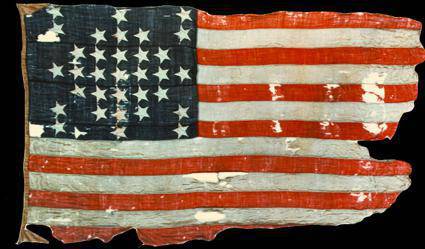
Flag of Fort Sumter, riddled with fragments, Anderson, as a shrine, took on the ship with him.
Well, the events at Fort Sumter were a direct signal to the war between the southerners and the northerners, which all newspapers immediately reported about, both in the North and in the South.
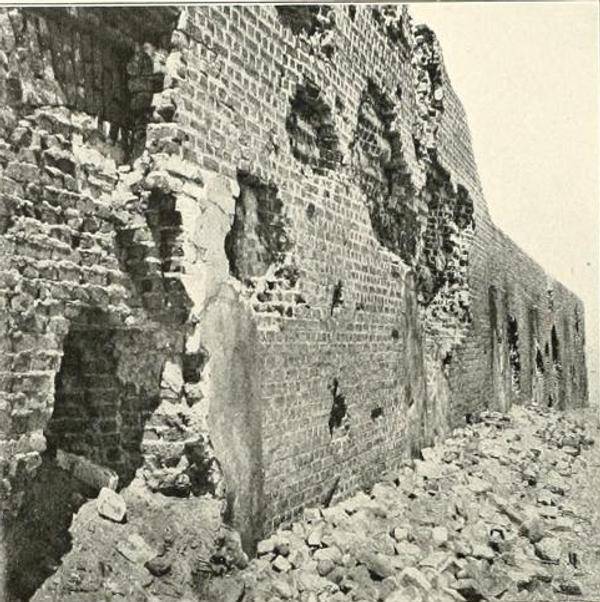
Traces in the wall of the fort from being hit by shells.
There is an opinion that all this was done on purpose, and that the North simply provoked the South to speak in order to present the southerners to vile aggressors. Many explained the reason for the shelling by fears that the Fox squadron would increase the defense capabilities of the fort, and this, they say, was in no way to be allowed. It is shared by the historian Charles Ramsdel. He believes that by sending the ships to the fort, Lincoln forced the Confederation to make the first shot, that is, presented it to the aggressor.
Want to visit Fort Sumter today? The ship “General Beregar” will take you there.
There is an opposite opinion: the opinion expressed in Marx by 1861. After all, it was possible to wait until the fort, in the absence of food, surrendered without a fight, but the secessionists began the bombardment, just to start a war, in the victorious outcome of which they were sure. Anyway, the shelling of the fort caused a shock. Some of the officers sympathetic to the South, after such a blatant "act of aggression" went to the service to the northerners. Lincoln called the 75 thousandth army under arms, but it also alienated many officers from the North, in particular, General Jubal Early, and caused the withdrawal of such states as Virginia, Tennessee and North Carolina from the Union.
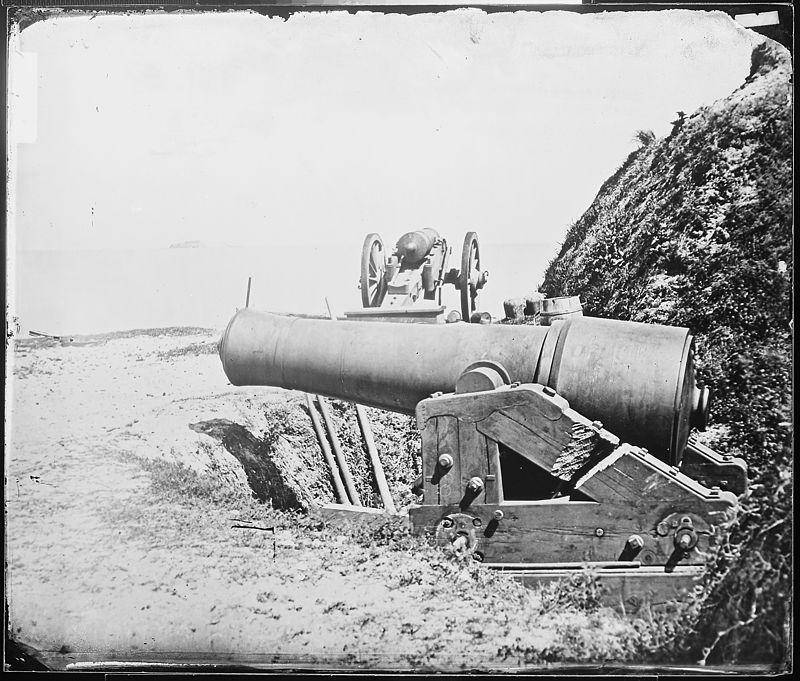
Cannons at Fort Sumter, captured by the Southerners.
The fort fell into the hands of northerners a few days after the surrender of the army of Northern Virginia, exactly four years after its surrender - April 14 of the year 1865.
Well, the shelling of Fort Sumter is on a par with such overtly mysterious incidents as the explosion on the Maine cruiser in Havana, the sinking of the Lusitania, the Japanese attack on Pearl Harbor and the completely incomprehensible incident in the Gulf of Tonkin, the exact information about which we We will never get it now!
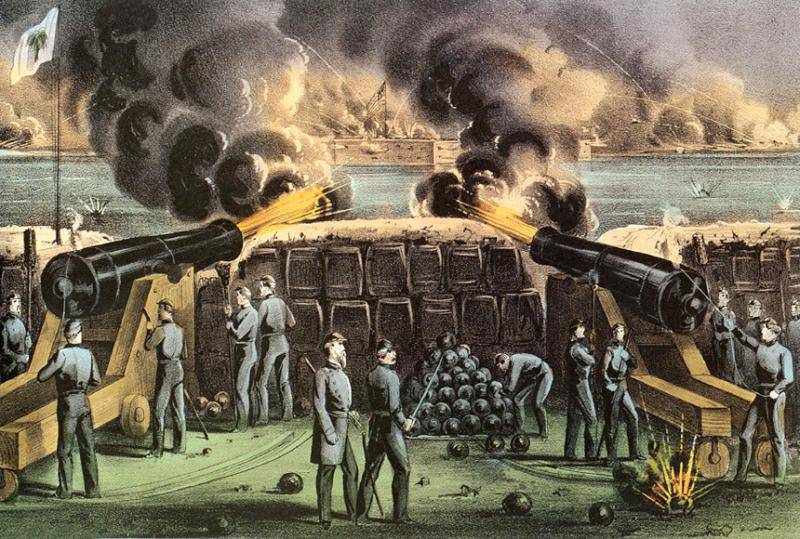
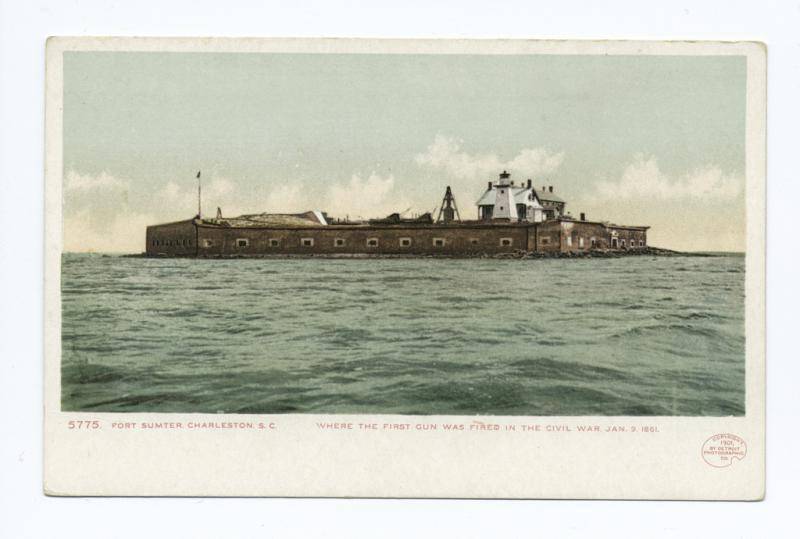
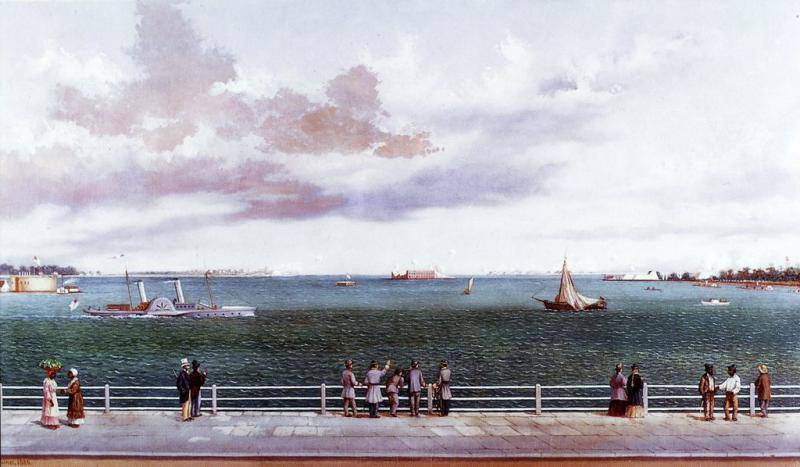
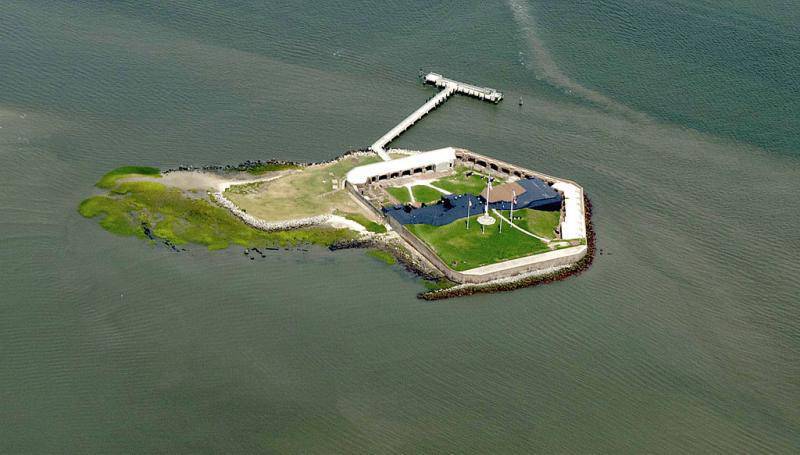
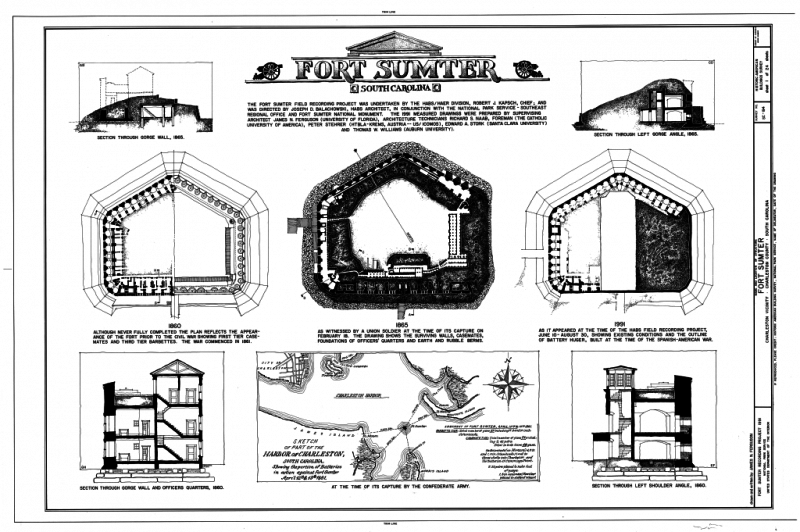
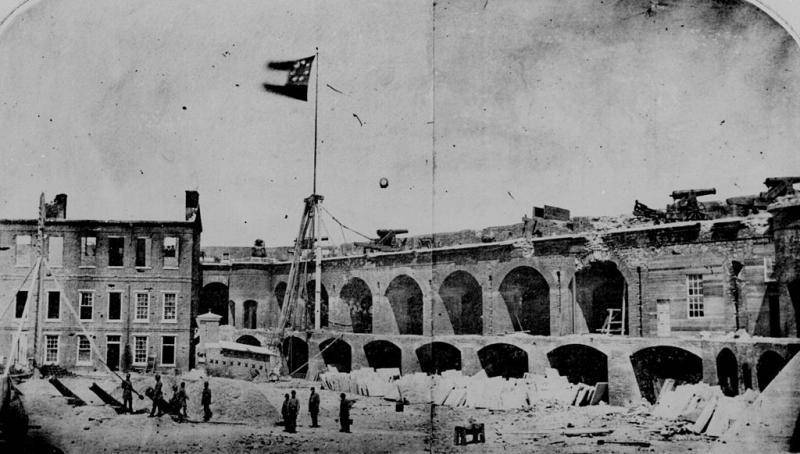
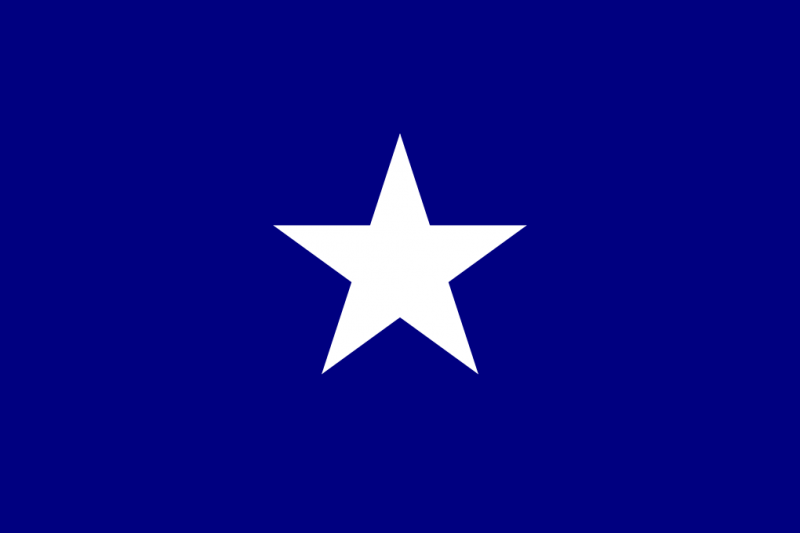
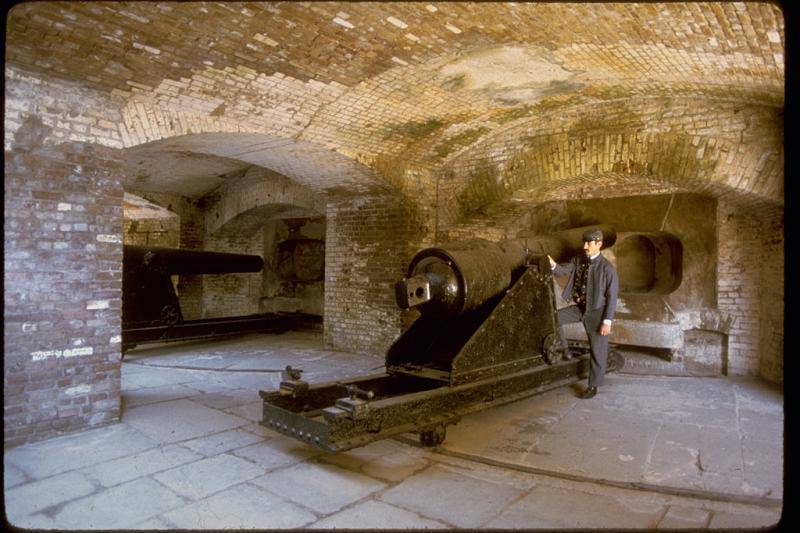
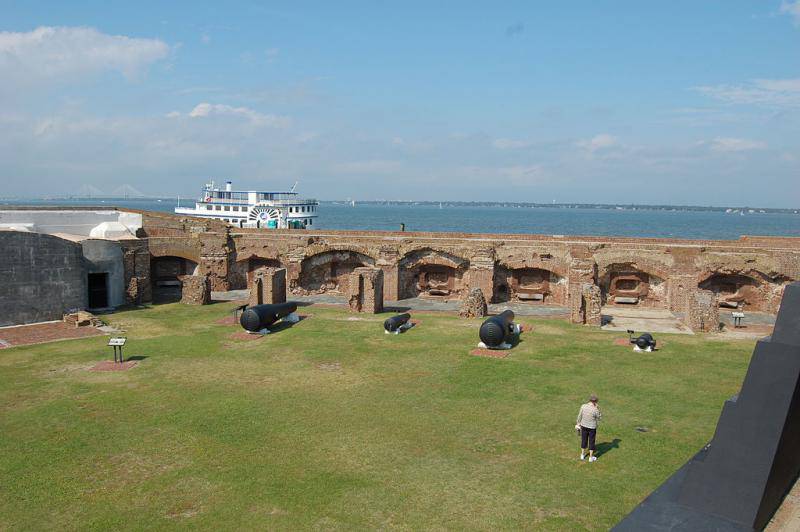
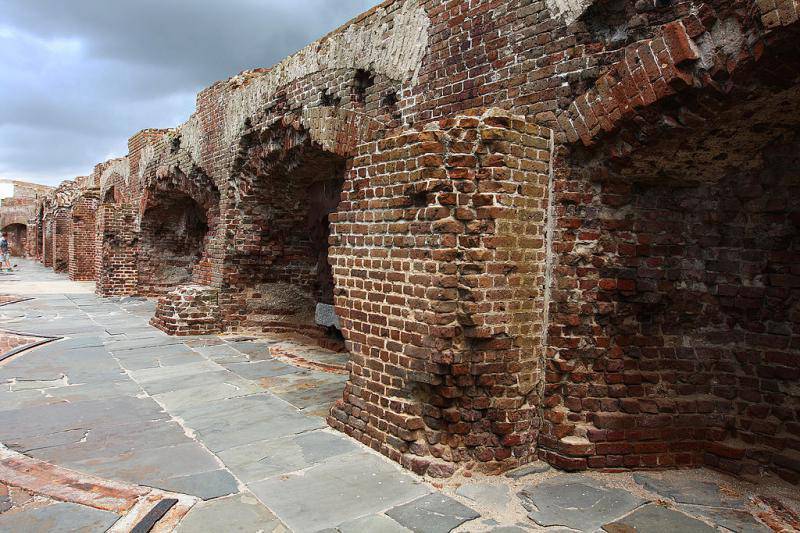
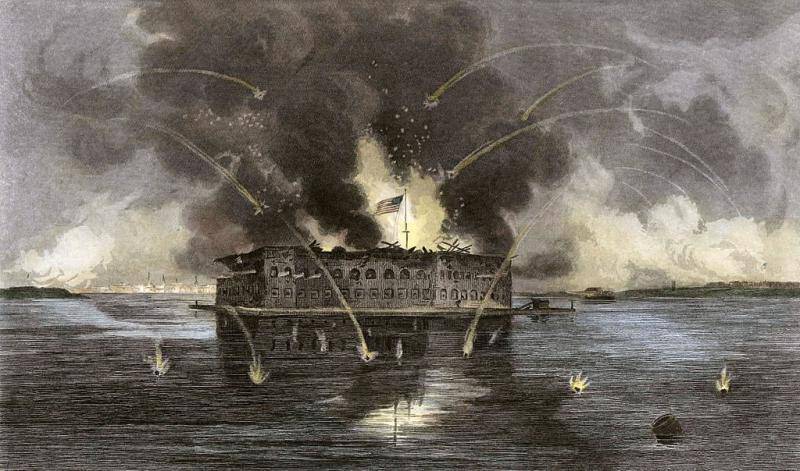
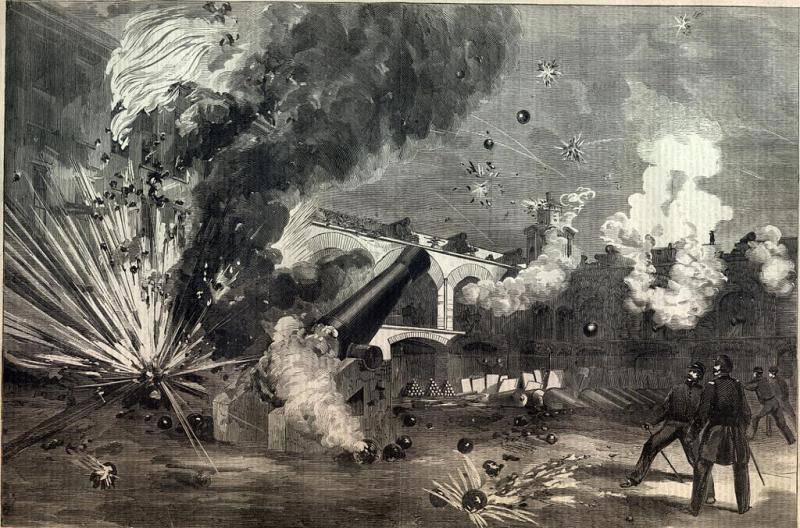
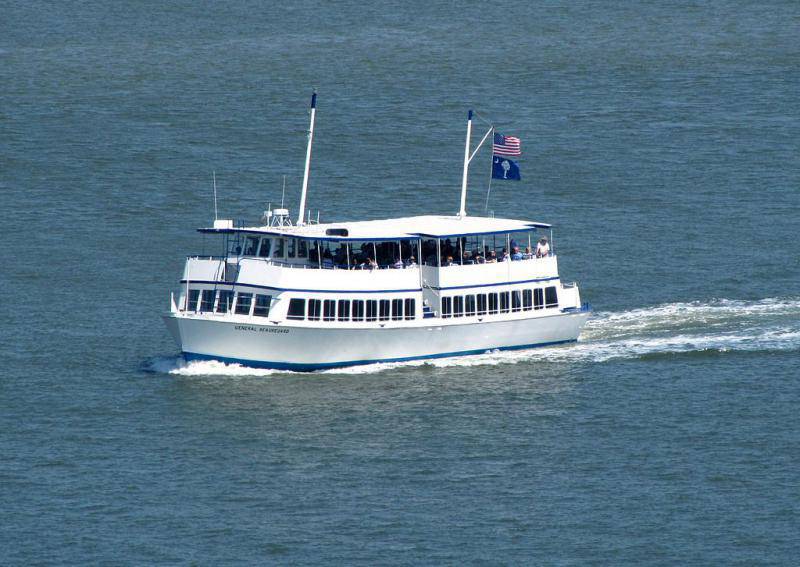
Information